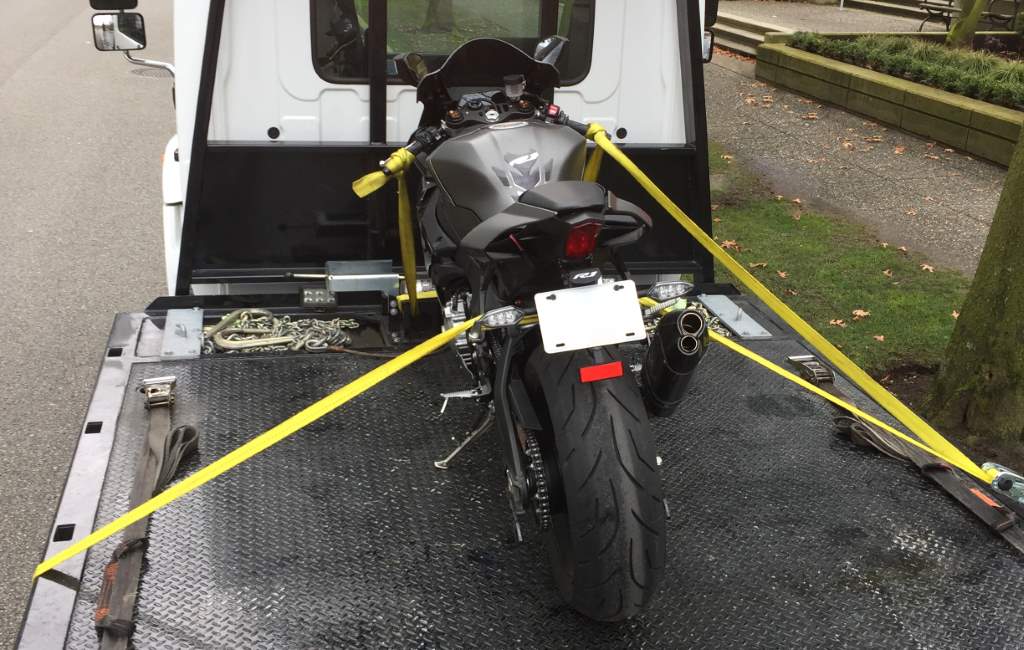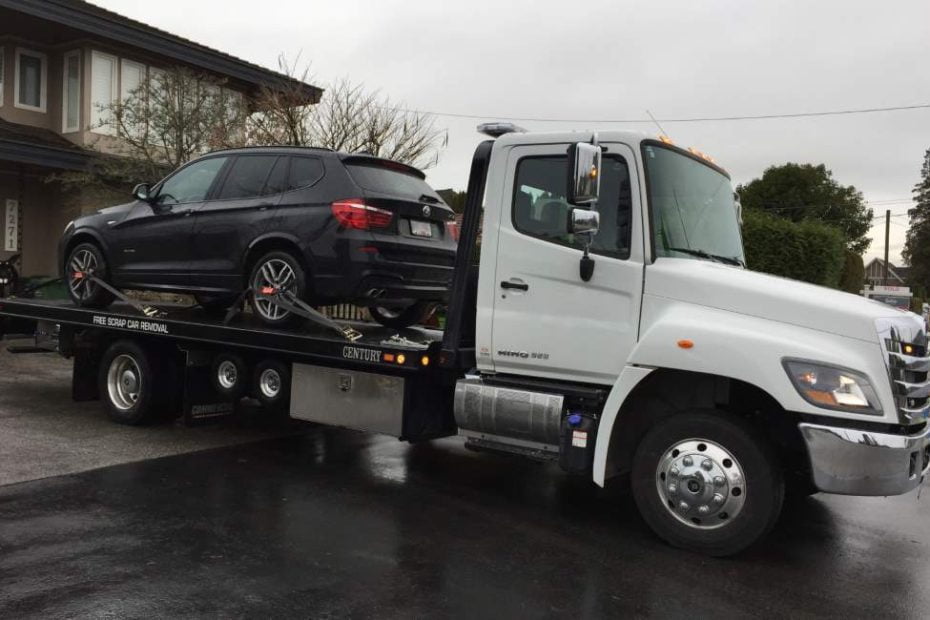Towing is the process of pulling or hauling a vehicle using another vehicle, typically a tow truck. It is a common practice used to transport vehicles that are unable to move on their own due to mechanical issues, accidents, or other reasons. Towing can be done for various types of vehicles, including cars, motorcycles, trucks, and even boats.
There are several reasons why a vehicle may need to be towed. One of the most common reasons is mechanical failure. If a vehicle breaks down on the road and cannot be repaired on-site, it will need to be towed to a repair shop. Accidents and collisions are another common reason for towing. When a vehicle is involved in an accident and cannot be driven, it will need to be towed away from the scene. Additionally, vehicles that are illegally parked or abandoned may also be towed by authorities.
Key Takeaways
- Towing involves moving a vehicle from one location to another using a tow truck.
- Before towing, it’s important to prepare and find a reliable towing service.
- When the tow truck arrives, assess the situation and determine the best course of action.
- Hooking up the vehicle requires following a step-by-step guide and securing it with safety measures.
- During transport, the tow truck driver will take necessary precautions to ensure the vehicle arrives safely.
Preparing for a Tow: What You Need to Know
Before towing a vehicle, it is important to take certain safety precautions. First and foremost, ensure that you are in a safe location away from traffic. If possible, move your vehicle to the side of the road or onto a shoulder to avoid any potential accidents. Turn on your hazard lights to alert other drivers of your presence.
Next, gather all the necessary equipment for towing. This includes a tow hitch or tow bar, safety chains, and towing lights. Make sure that these items are in good condition and properly attached to your vehicle before attempting to tow.
It is also crucial to check the weight capacity of your vehicle before towing. Every vehicle has a maximum weight limit that it can safely tow. Exceeding this limit can put unnecessary strain on your vehicle’s engine and brakes, potentially causing damage or accidents. Refer to your vehicle’s owner’s manual or consult with a professional if you are unsure about its towing capacity.
Finding a Reliable Towing Service: Tips and Tricks
When you find yourself in need of a towing service, it is important to choose a reliable and reputable company. Here are some tips and tricks to help you find the right towing service for your needs.
Start by researching towing companies in your area. Look for companies that have been in business for a long time and have a good reputation. Check their websites or call them directly to gather more information about their services.
It is also important to check for certifications and licenses. A reputable towing company should have the necessary licenses and certifications to operate legally. This ensures that they meet certain standards and regulations set by the industry.
Reading reviews and asking for recommendations from friends, family, or local mechanics can also help you find a reliable towing service. Reviews provide insights into the experiences of previous customers, giving you an idea of the quality of service provided by a particular company.
The Tow Truck Arrives: What to Expect
When the tow truck arrives at your location, it is important to greet the tow truck driver in a friendly and professional manner. They are there to assist you, so it is important to establish a positive rapport from the start.
Take the time to discuss the situation with the tow truck driver and any concerns you may have. Provide them with all the necessary information about your vehicle, including its make, model, and any specific issues it may have. This will help the tow truck driver determine the best course of action for towing your vehicle.
Before the tow truck driver begins the towing process, you will be required to sign necessary paperwork. This may include a release form or an agreement outlining the terms and conditions of the towing service. Read through these documents carefully before signing to ensure that you understand and agree to all the terms.
Assessing the Situation: Determining the Best Course of Action
Once the tow truck driver has assessed the situation, they will determine the best course of action for towing your vehicle. This will depend on several factors, including the condition of your vehicle and the distance it needs to be towed.
The tow truck driver will evaluate the condition of your vehicle to determine if it can be towed using a flatbed tow truck or if it needs to be towed using a traditional tow truck. A flatbed tow truck is typically used for vehicles that are unable to move on their own, such as those involved in accidents or with severe mechanical issues. A traditional tow truck, on the other hand, is used for vehicles that can still be driven but need to be transported.
During this assessment, the tow truck driver may also discuss any additional services that may be needed. For example, if your vehicle has a flat tire or a dead battery, they may offer to provide assistance in fixing these issues before towing.
Hooking Up the Vehicle: Step-by-Step Guide

Once the best towing method has been determined, the tow truck driver will begin the process of hooking up your vehicle. Here is a step-by-step guide to help you understand this process:
1. Prepare the vehicle for towing by turning off the engine and engaging the parking brake.
2. Attach the tow hitch or tow bar to your vehicle’s frame. Make sure that it is securely fastened and properly aligned.
3. Connect the safety chains from the tow hitch to your vehicle’s frame. These chains act as a backup in case the hitch fails.
4. Check that all connections are secure and double-check for any loose parts or accessories that may need to be removed or secured.
Securing the Vehicle: Safety Measures to Consider
Before transporting your vehicle, it is important to take additional safety measures to ensure that it remains secure during the tow. Here are some safety measures to consider:
1. Check the brakes and steering of your vehicle before towing. Ensure that they are in good working condition to prevent any accidents or damage during transport.
2. Secure any loose parts or accessories that may detach during the tow. This includes side mirrors, antennas, and spoilers. Use tape or straps to secure these items.
3. If your vehicle has a manual transmission, engage the parking brake and place it in neutral. If it has an automatic transmission, place it in park.
If you have any concerns about the safety of your vehicle during the tow, communicate them with the tow truck driver. They may be able to provide additional safety measures or reassurances to address your concerns.
Transporting the Vehicle: What Happens During the Tow
Once your vehicle is securely hooked up and all safety measures have been taken, the tow truck driver will transport your vehicle to its destination. During this process, it is important to follow all traffic laws and regulations to ensure a safe and smooth journey.
The tow truck driver will monitor your vehicle during transport to ensure that it remains secure and undamaged. They will also communicate with you if there are any issues or concerns that arise during the tow.
If you have any questions or need assistance during the transport, do not hesitate to communicate with the tow truck driver. They are there to help and ensure a successful towing experience.
Reaching Your Destination: What Happens Next
Once you reach your destination, the tow truck driver will unload your vehicle and assist you in getting it back on the road. Before driving away, take the time to inspect your vehicle for any damages that may have occurred during the tow.
If you notice any damages, discuss them with the tow truck driver and document them with photographs if possible. This will be important if you need to file an insurance claim or seek reimbursement for any damages caused during the towing process.
Additionally, discuss payment with the tow truck driver before they leave. Most towing companies accept cash, credit cards, or insurance payments. Make sure to obtain a receipt or invoice for the towing service for your records.
What Should I Do If I Notice Signs That My Vehicle Needs Towing Assistance?
If you notice signs your vehicle needs towing, the best thing to do is to call a reliable towing service immediately. Ignoring the signs and attempting to drive the vehicle can lead to further damage or accidents. It’s important to prioritize safety and seek professional assistance as soon as possible.
Finalizing the Process: Payment and Follow-Up Steps
After the towing process is complete, there are a few final steps to take to finalize the process. First, make sure to pay for the towing service according to the agreed-upon terms. This may involve paying the tow truck driver directly or contacting the towing company’s office to make a payment.
Next, obtain any necessary paperwork from the tow truck driver or the towing company. This may include a receipt, an invoice, or any other documentation related to the towing service. Keep these documents in a safe place for future reference.
Finally, follow up with any necessary repairs or insurance claims. If your vehicle was damaged during the tow, contact your insurance company and provide them with all the necessary documentation and information. They will guide you through the claims process and help you get reimbursed for any damages.
Towing can be a stressful experience, but understanding the basics and finding a reliable towing service can make the process smoother and less daunting. By following these tips and guidelines, you can ensure a safe and successful towing experience. Remember to take necessary safety precautions, research towing companies in your area, and communicate openly with the tow truck driver throughout the process. With proper preparation and knowledge, you can navigate the towing process with ease.
If you’re interested in learning more about the different types of towing services available, you might find our article on motorcycle towing to be helpful. Whether you’re a motorcycle enthusiast or simply curious about how motorcycles are towed, this article provides valuable insights and tips. From the equipment used to the safety precautions taken, it covers everything you need to know. Check out our motorcycle towing article for a comprehensive guide on this specialized towing service.
FAQs
What is a tow?
A tow is the process of pulling or hauling a vehicle using another vehicle, such as a tow truck or another car.
When do I need a tow?
You may need a tow if your vehicle breaks down, gets stuck, or is involved in an accident and cannot be driven safely.
What should I do before the tow truck arrives?
Before the tow truck arrives, make sure you remove any personal belongings from your vehicle and take note of any damage or issues with your vehicle.
What happens during the tow?
During the tow, your vehicle will be secured to the tow truck and transported to a designated location, such as a repair shop or impound lot.
What should I expect during the tow?
During the tow, you can expect your vehicle to be lifted onto the tow truck and secured using straps or chains. You may also need to sign paperwork and provide information about your vehicle and destination.
What happens after the tow?
After the tow, your vehicle will be taken to the designated location and you will need to arrange for repairs or retrieval of your vehicle. You may also need to pay for the tow and any storage fees.
